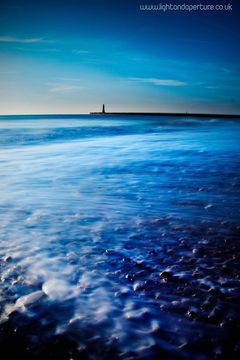Blog
#WEXMondays - how I made the photograph (5/5/2015)
Each week WEX Photographic run a competition asking people to submit their best shot from the previous week. WEX asked me to give a bit of explanationa s to how I took the shot I submitted, so here it goes:
Why I took the shot
I now live away from my home city of Sunderland, but take every opportunity when I'm back to go out and shoot the beautiful coastline at dawn. I was back for one night with work, and having checked the weather forecast the night before I knew there was a chance for a good shot. Alarm set, I was up and out at 5:40am.
I'd tried a couple of compositions closer to the harbour, but there wasn't a great deal of foreground interest on the beach and not a lot of dynamism in the shot. I moved up to this location - about 5 minutes walk from my original spot - and was drawn to the way that the tide ebbed over the pebbles on this part of the sand.
Set up
The shoot was my first opportunity to use my new Fujifilm XT-1 to photograph seascapes. Shooting with an 18-55mm lens, I put it on my tripod and used the combination of an ND4 and ND8 filter to slow the shutter speed and blur the water. It was then a case of firing off a number of photos as the tide receded and choosing the best frame.
I selected this frame because I liked the white streak that the tide had created as it ebbed, and thought it created a nice lead in line to the photograph.
Post processing
In Photoshop I combined two exposures of the shot to balance the sky with the land. Then I boosted the vibrance, applied some dodging and burning and added a vignette.
Why I submitted this shot for #WexMondays
I came across #WexMondays last week, just after I'd taken this photo, and thought I would submit it. I'll be aiming to shoot specifically for the competition from now on though, and I hope having that weekly goal to aim for will help me to shoot more regularly and improve my photography further.
Technical rating
5/10 - the shot requires careful focussing and for the camera to remain still during the long exposure, but the real challenge is envisioning what the shot will look like with the slow shutter speed before the camera has even been put on the tripod.

